Pink Floyd Discography Review
The following are reviews of every Pink Floyd studio album
from 1967-1983. There are no greatest hits, compilations, solo, live
recordings, or post-Waters albums reviewed:
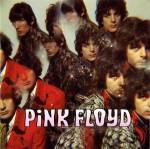 The Piper at the Gates of Dawn (1967)
The Piper at the Gates of Dawn (1967)
Floyd’s unheralded, and underrated, debut album. Recorded at the same time as The Beatles Sgt. Peppers (and in the same studio-Abbey Road), it’s hard not to notice a few similarities between the two. Rumor has it that Lennon and McCartney used to sneak into the Floyd mixing sessions to hear what they were up to. This is Pink Floyd as a psychedelic-pop band, not the artsy, self-indulgent “acid rockers” that they later became known as. Whereas The Beatles were well into their careers by this point and first starting to experiment with drugs and the wonders of the recording studio, Floyd was still a young, undeveloped pop act that was writing tripped out songs about gnomes, strange cats, and galaxies. Lyrically and musically, this album belongs to Syd Barrett. The underground London hippie scene was in full effect at this point, and this album reflects those times. Listening to it now, parts are dated and somewhat corny. But if you put yourself in the mind frame of 1967 and compare this album to other “psychedelic” albums of the time, you could sense that Floyd wasn’t just some drop in the pan band that was going to disappear. They were just beginning.
Highlights: Astronomy Domine, Interstellar Overdrive, Bike, Lucifer Sam
Could Do Without: The Gnome, Take Up Thy Stethoscope and Walk
 A Saucerful of Secrets (1968)
A Saucerful of Secrets (1968)
By this point, Floyd was still a struggling band on the circuit and Syd Barrett’s drug abuse and mental state were taking their toll. Syd was relieved of his duties during the recording and replaced by David Gilmour. This is the only Floyd album that technically contained a 5-member lineup, with Barrett and Gilmour splitting the guitar parts. The tensions within the band at this time are apparent on the album. Waters was starting to take over the writing from Barrett, but was still far off from his future works. This album sounds like Floyd at a crossroads trying to define themselves. It was also the beginning of the change in sound for the band. With the absence of Barrett’s LSD laced lyrics and song structures, longer, more atmospheric numbers started appearing. This is NOT a pop album.
Highlights: Set the Controls For the Heart of the Sun, A Saucerful of Secrets, Let There Be Light
Could Do Without: Jugband Blues, Remember a Day, See Saw
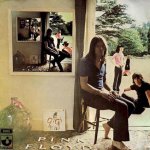 Ummagumma (1969)
Ummagumma (1969)
Floyd’s first double-album, with one record being four live tracks and the other containing “solo” pieces by each member. The live disc has interesting versions of “Astronomy Domine” and “Careful With That Axe, Eugene.” But the recording seems to lack an overall intensity or sense of meaning. As for the solo sections, it doesn’t get any more self-indulgent than this. I’m not sure how many people can make it through any of these recordings without being on at least three hits of acid or married to a member of the band. The tracks are long, sometimes pointless, extremely psychedelic, and progressive. What’s really amazing is that a record company would allow a band of Floyd’s caliber, in 1969, to release such an experimental record. The band seemed to still be struggling to find its sound at this point without a lead songwriter or charismatic leader like Barrett.
Highlights: Cover artwork, Several Species, Careful With That Axe, The Narrow Way
Could Do Without: Nick Mason’s section, Rick Wrights self-indulgent piano
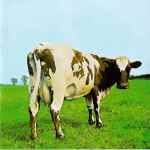 Atom Hear Mother (1970)
Atom Hear Mother (1970)
Perhaps this is the album that started the Prog-Rock movement and reinstated the notion that Floyd was nothing more than a “drug band” (ironically, the band members themselves claim to have never really been into taking drugs). No longer did they care about writing pop songs or anything shorter than 10 minutes. This was the beginning of things to come. Probably Floyd’s most experimental album to this point. The title track is over 23 minutes long and broken up into movements like a symphony. Each being weirder than its predecessor. This is almost Ummagumma Pt. 2. Waters, Wright, and Gilmour seemed to be each trying to gain momentum as lead songwriter and take the band onto one unified path. Floyd was starting to become a band with no direction, no leader, no songwriters, but lots and lots of creativity and ambience. Their studio experimentations were starting to take over the song writing process, and the band seemed more concerned with sounding “weird” than actually sounding good.
Highlights: If, Atom Heart Mother Suite
Could Do Without: Alan’s Psychedelic Breakfast
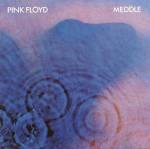 Meddle (1971)
Meddle (1971)
Probably what I would call the first “proper” Pink Floyd album, as we know them today. The band was starting to find its songwriting groove and this record contains flashes of greatness and the beginning of the Floyd ”sound.” The opening track, “One of These Days”, was probably Floyd’s “hardest” number to date and “Echoes” probably its best overall piece. With “Echoes”, they had finally achieved the prowess to mix experimental, spacey songs with good structure and writing. “Echoes” is the first “signature” Floyd sounding song. 23 minutes long with a breakdown in the middle that’s enough to make you scream for momma and a Valium. Unfortunately for die-hard fans, this was also the beginning of Floyd’s rise to superstardom. Critics were starting to notice this little outfit from England, who before this album were more famous for having a lead singer/guitarist that went mental on acid. And to think, Waters had yet to even hit his groove.
Highlights: Echoes, Fearless, One of These Days
Could Do Without: San Tropez, Seamus
 Obscured by Clouds (1972)
Obscured by Clouds (1972)
Not sure why drummer Nick Mason refused to play his hi-hat on this album, but that combined with the overall mediocre production and the fact that it was the score to some unknown, low-budget sci-fi flick, one would think, would make this what the kids call a “wack” album. But it isn’t. Gilmour finally started flashing his guitar and singing skills on this one. The obligatory, melodic, whining guitar solos are all over this record. It’s as if someone finally told Gilmour that he was actually allowed to play solos and not sit back in Barrett’s long shadow. Roger Waters also began to take over as lead songwriter, and though still underdeveloped, there are signs that he was about to really take off as a conceptual writer. Plenty of good melodies, instrumentation, and writing on this album.
Highlights: Burning Bridges, Whuts…uh, the Deal?, Childhood’s End
Could Do Without: Free Four, Stay, freaky children chant that ends album
 Dark Side of the Moon (1973)
Dark Side of the Moon (1973)
Hmmm, what can I say about this album that hasn’t already been said? That it’s an overrated, overplayed, over-hyped stoner rock classic? That you have to be high to listen to it? Perhaps. But like Flea said about “Under the Bridge,” “I don’t care if it’s overplayed, it’s still a great fuckin song.” Same can be said with this album. Not only did Floyd do a 180 turn around in terms of production from Obscured to this, but the conceptual writing of Waters finally bloomed. This is one of the overall best produced albums…ever! Floyd was starting to experiment more with getting better sounds than making weird ones. This is their first “concept” album that had all tracks running into each other, and a theme that tied them all together. Gilmour shines, Waters writing is brilliant, and Rick Wright showed us why he was the resident musician of the band. This was the crossover album of the decade. Floyd was now as mainstream (for 1973) as Neil Young and Led Zeppelin. This is the album that took them from a psychedelic, art band to commercial megastars and classic rockers. Contains the best of both writing styles: part ambient, dark, experimental pieces; part poppy 5 minute rockers with soul. And I still don’t think it’s even their best work.
Highlights: Breathe, Great Gig in the Sky, Time, Us and Them
Could Do Without: Every classic rock radio station playing it to death
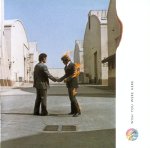 Wish You Were Here (1975)
Wish You Were Here (1975)
The machine known as Pink Floyd was now in full gear after the huge breakthrough success of Dark Side. The band were now mega rock stars coming off a hugely successful U.S. tour. Everyone knew who Pink Floyd was, and the record execs made sure to ride the gravy train all they could. All this, combined with a surprise visit in the recording studio from Syd Barrett, influenced the writing process and recording sessions for Wish You Were Here. The mood of the album is one of soberness and reflection on the bands sudden rise to success. Somehow, they also managed to throw in a couple of radio-friendly songs between the epic “Shine on You Crazy Diamond” nine-part opus to Barrett. “Wish You Were Here”, the song, became Floyd’s most accessible single to date and classic rock radio staple. Soon, the kids who thought Floyd was just some drugged out hippie band realized that these guys could also write songs like Elton John. Undoubtedly, the record execs had a huge role in making sure the band maintained its current radio friendly approach. Waters even wrote the song, “Have A Cigar”, attacking the corporate mainstreaming of the band. Now everyone could be a Floyd fan and sing along to their hit singles. It was starting to make the die-hard fans sick to their stomachs that a band that was so experimental and underground were now the superstars in limos playing to sold out stadiums and writing songs that your girlfriend could listen to.
Highlights: Shine on You Crazy Diamond (all parts), Have a Cigar
Could Do Without: Silly teenage girls singing along to “Wish You Were Here”
 Animals (1977)
Animals (1977)
After two highly successful, radio friendly, die-hard fan isolating albums, what did Floyd do? Put out its least accessible album of the post-Dark Side era. By now, the band was taking two years between each record, and Roger Waters megalomania was starting to take its toll on the band and all around him. Waters was the main writer for both Dark Side and Wish You Were Here and was peaking when he wrote the lyrics for Animals. Loosely interpreted from George Orwell’s, Animal Farm, Waters wrote three songs correlating animals with human society. The album contains three main tracks, each clocking in over 10 minutes in length, placed between two acoustic love ballads. “Pigs” were the politicians, “Dogs” were the greedy businessmen, and “Sheep” were the common man. The song structures and musicianship on this record show why Floyd are the great band that they are considered today. Epic arrangements combined with great lyrics and singing, make this perhaps Floyd’s best overall work. The tracks are upbeat and more “rock” than anything they had done before. This is a less ambient album than its predecessors, and its subsequent tour would change the band forever.
Highlights: Lyrics, playing, production
Could Do Without: People saying this is the worst Floyd album ever
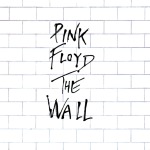 The Wall (1979)
The Wall (1979)
At a show in Montreal during the Animals tour, Roger Waters spit on an unruly fan in the front row, which led to the concept of building a wall between the band and its fans…literally. This incident launched the greatest concept album every written. The recording took over 11 months, and included plenty of orchestration from Michael Kamen and guest musicians. Roger Waters was now in full control of Pink Floyd’s writing, concepts, and overall direction. His relationship with his band mates had gotten so bad that Rick Wright appears on only a few tracks on the record and the band went in with the knowledge that this would be their last recording together. The album follows Waters childhood dealing with his fathers World War II death, his rise to rock stardom, and his fall into megalomania as a controlling figure in the band. Highly influenced by Syd Barrett’s rise and fall, The Wall is an extremely emotional and personal album. The songs blend into one and another to tell the conceptual story, and the bands writing had become more orchestrated and produced. There were the hit singles “Another Brick In The Wall” and “Comfortably Numb” (which contains perhaps Gilmours signature guitar solo), but there were also soul draining numbers about love lost, drug abuse, and being a cult superhero. The Wall tells the story of rock stardom and the dark, disturbing things it can bring. Most would say this is the bands “masterpiece.” It is hard to argue against the point that this is Floyd’s “greatest” album.
Highlights: One of My Turns, Goodbye Blue Sky, Run Like Hell
Could Do Without: Overplay of “Comfortably Numb” & “Another Brick”
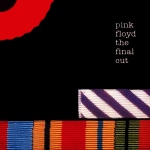 The Final Cut (1983)
The Final Cut (1983)
Let’s get realistic; this is more Roger Waters first solo album than Floyd’s final album. Rick Wright was out of the band, another drummer was used for most of studio sessions, Gilmour sings on only one track and is used sparingly for random guitar solos, and the concept was about Waters father’s death. The music sounds more like a soundtrack to a World War II movie than a “rock” album. Those expecting another Wall or Dark Side must have been highly disappointed. Most of the record is performed by an orchestra and is so downbeat and depressing that the album is seldom even recognized as a Floyd record. That being said, this is probably one of the most intense albums you will ever listen to. Extremely personal lyrics and stories of war create a sense of empathy for Water’s situation. It’s obvious that at this juncture of their career, after four successful albums, Floyd was going to do whatever they wanted to do. Even though this isn’t really a Pink Floyd album, it was a very un-sensational end to a highly successful and influential career.
Highlights: The Final Cut, Your Possible Pasts, Not Now John
Could Do Without: Two Suns in the Sunset, saying this is a Floyd album
 The Piper at the Gates of Dawn (1967)
The Piper at the Gates of Dawn (1967)Floyd’s unheralded, and underrated, debut album. Recorded at the same time as The Beatles Sgt. Peppers (and in the same studio-Abbey Road), it’s hard not to notice a few similarities between the two. Rumor has it that Lennon and McCartney used to sneak into the Floyd mixing sessions to hear what they were up to. This is Pink Floyd as a psychedelic-pop band, not the artsy, self-indulgent “acid rockers” that they later became known as. Whereas The Beatles were well into their careers by this point and first starting to experiment with drugs and the wonders of the recording studio, Floyd was still a young, undeveloped pop act that was writing tripped out songs about gnomes, strange cats, and galaxies. Lyrically and musically, this album belongs to Syd Barrett. The underground London hippie scene was in full effect at this point, and this album reflects those times. Listening to it now, parts are dated and somewhat corny. But if you put yourself in the mind frame of 1967 and compare this album to other “psychedelic” albums of the time, you could sense that Floyd wasn’t just some drop in the pan band that was going to disappear. They were just beginning.
Highlights: Astronomy Domine, Interstellar Overdrive, Bike, Lucifer Sam
Could Do Without: The Gnome, Take Up Thy Stethoscope and Walk
 A Saucerful of Secrets (1968)
A Saucerful of Secrets (1968)By this point, Floyd was still a struggling band on the circuit and Syd Barrett’s drug abuse and mental state were taking their toll. Syd was relieved of his duties during the recording and replaced by David Gilmour. This is the only Floyd album that technically contained a 5-member lineup, with Barrett and Gilmour splitting the guitar parts. The tensions within the band at this time are apparent on the album. Waters was starting to take over the writing from Barrett, but was still far off from his future works. This album sounds like Floyd at a crossroads trying to define themselves. It was also the beginning of the change in sound for the band. With the absence of Barrett’s LSD laced lyrics and song structures, longer, more atmospheric numbers started appearing. This is NOT a pop album.
Highlights: Set the Controls For the Heart of the Sun, A Saucerful of Secrets, Let There Be Light
Could Do Without: Jugband Blues, Remember a Day, See Saw
 Ummagumma (1969)
Ummagumma (1969)Floyd’s first double-album, with one record being four live tracks and the other containing “solo” pieces by each member. The live disc has interesting versions of “Astronomy Domine” and “Careful With That Axe, Eugene.” But the recording seems to lack an overall intensity or sense of meaning. As for the solo sections, it doesn’t get any more self-indulgent than this. I’m not sure how many people can make it through any of these recordings without being on at least three hits of acid or married to a member of the band. The tracks are long, sometimes pointless, extremely psychedelic, and progressive. What’s really amazing is that a record company would allow a band of Floyd’s caliber, in 1969, to release such an experimental record. The band seemed to still be struggling to find its sound at this point without a lead songwriter or charismatic leader like Barrett.
Highlights: Cover artwork, Several Species, Careful With That Axe, The Narrow Way
Could Do Without: Nick Mason’s section, Rick Wrights self-indulgent piano
 Atom Hear Mother (1970)
Atom Hear Mother (1970)Perhaps this is the album that started the Prog-Rock movement and reinstated the notion that Floyd was nothing more than a “drug band” (ironically, the band members themselves claim to have never really been into taking drugs). No longer did they care about writing pop songs or anything shorter than 10 minutes. This was the beginning of things to come. Probably Floyd’s most experimental album to this point. The title track is over 23 minutes long and broken up into movements like a symphony. Each being weirder than its predecessor. This is almost Ummagumma Pt. 2. Waters, Wright, and Gilmour seemed to be each trying to gain momentum as lead songwriter and take the band onto one unified path. Floyd was starting to become a band with no direction, no leader, no songwriters, but lots and lots of creativity and ambience. Their studio experimentations were starting to take over the song writing process, and the band seemed more concerned with sounding “weird” than actually sounding good.
Highlights: If, Atom Heart Mother Suite
Could Do Without: Alan’s Psychedelic Breakfast
 Meddle (1971)
Meddle (1971)Probably what I would call the first “proper” Pink Floyd album, as we know them today. The band was starting to find its songwriting groove and this record contains flashes of greatness and the beginning of the Floyd ”sound.” The opening track, “One of These Days”, was probably Floyd’s “hardest” number to date and “Echoes” probably its best overall piece. With “Echoes”, they had finally achieved the prowess to mix experimental, spacey songs with good structure and writing. “Echoes” is the first “signature” Floyd sounding song. 23 minutes long with a breakdown in the middle that’s enough to make you scream for momma and a Valium. Unfortunately for die-hard fans, this was also the beginning of Floyd’s rise to superstardom. Critics were starting to notice this little outfit from England, who before this album were more famous for having a lead singer/guitarist that went mental on acid. And to think, Waters had yet to even hit his groove.
Highlights: Echoes, Fearless, One of These Days
Could Do Without: San Tropez, Seamus
 Obscured by Clouds (1972)
Obscured by Clouds (1972)Not sure why drummer Nick Mason refused to play his hi-hat on this album, but that combined with the overall mediocre production and the fact that it was the score to some unknown, low-budget sci-fi flick, one would think, would make this what the kids call a “wack” album. But it isn’t. Gilmour finally started flashing his guitar and singing skills on this one. The obligatory, melodic, whining guitar solos are all over this record. It’s as if someone finally told Gilmour that he was actually allowed to play solos and not sit back in Barrett’s long shadow. Roger Waters also began to take over as lead songwriter, and though still underdeveloped, there are signs that he was about to really take off as a conceptual writer. Plenty of good melodies, instrumentation, and writing on this album.
Highlights: Burning Bridges, Whuts…uh, the Deal?, Childhood’s End
Could Do Without: Free Four, Stay, freaky children chant that ends album
 Dark Side of the Moon (1973)
Dark Side of the Moon (1973)Hmmm, what can I say about this album that hasn’t already been said? That it’s an overrated, overplayed, over-hyped stoner rock classic? That you have to be high to listen to it? Perhaps. But like Flea said about “Under the Bridge,” “I don’t care if it’s overplayed, it’s still a great fuckin song.” Same can be said with this album. Not only did Floyd do a 180 turn around in terms of production from Obscured to this, but the conceptual writing of Waters finally bloomed. This is one of the overall best produced albums…ever! Floyd was starting to experiment more with getting better sounds than making weird ones. This is their first “concept” album that had all tracks running into each other, and a theme that tied them all together. Gilmour shines, Waters writing is brilliant, and Rick Wright showed us why he was the resident musician of the band. This was the crossover album of the decade. Floyd was now as mainstream (for 1973) as Neil Young and Led Zeppelin. This is the album that took them from a psychedelic, art band to commercial megastars and classic rockers. Contains the best of both writing styles: part ambient, dark, experimental pieces; part poppy 5 minute rockers with soul. And I still don’t think it’s even their best work.
Highlights: Breathe, Great Gig in the Sky, Time, Us and Them
Could Do Without: Every classic rock radio station playing it to death
 Wish You Were Here (1975)
Wish You Were Here (1975)The machine known as Pink Floyd was now in full gear after the huge breakthrough success of Dark Side. The band were now mega rock stars coming off a hugely successful U.S. tour. Everyone knew who Pink Floyd was, and the record execs made sure to ride the gravy train all they could. All this, combined with a surprise visit in the recording studio from Syd Barrett, influenced the writing process and recording sessions for Wish You Were Here. The mood of the album is one of soberness and reflection on the bands sudden rise to success. Somehow, they also managed to throw in a couple of radio-friendly songs between the epic “Shine on You Crazy Diamond” nine-part opus to Barrett. “Wish You Were Here”, the song, became Floyd’s most accessible single to date and classic rock radio staple. Soon, the kids who thought Floyd was just some drugged out hippie band realized that these guys could also write songs like Elton John. Undoubtedly, the record execs had a huge role in making sure the band maintained its current radio friendly approach. Waters even wrote the song, “Have A Cigar”, attacking the corporate mainstreaming of the band. Now everyone could be a Floyd fan and sing along to their hit singles. It was starting to make the die-hard fans sick to their stomachs that a band that was so experimental and underground were now the superstars in limos playing to sold out stadiums and writing songs that your girlfriend could listen to.
Highlights: Shine on You Crazy Diamond (all parts), Have a Cigar
Could Do Without: Silly teenage girls singing along to “Wish You Were Here”
 Animals (1977)
Animals (1977)After two highly successful, radio friendly, die-hard fan isolating albums, what did Floyd do? Put out its least accessible album of the post-Dark Side era. By now, the band was taking two years between each record, and Roger Waters megalomania was starting to take its toll on the band and all around him. Waters was the main writer for both Dark Side and Wish You Were Here and was peaking when he wrote the lyrics for Animals. Loosely interpreted from George Orwell’s, Animal Farm, Waters wrote three songs correlating animals with human society. The album contains three main tracks, each clocking in over 10 minutes in length, placed between two acoustic love ballads. “Pigs” were the politicians, “Dogs” were the greedy businessmen, and “Sheep” were the common man. The song structures and musicianship on this record show why Floyd are the great band that they are considered today. Epic arrangements combined with great lyrics and singing, make this perhaps Floyd’s best overall work. The tracks are upbeat and more “rock” than anything they had done before. This is a less ambient album than its predecessors, and its subsequent tour would change the band forever.
Highlights: Lyrics, playing, production
Could Do Without: People saying this is the worst Floyd album ever
 The Wall (1979)
The Wall (1979)At a show in Montreal during the Animals tour, Roger Waters spit on an unruly fan in the front row, which led to the concept of building a wall between the band and its fans…literally. This incident launched the greatest concept album every written. The recording took over 11 months, and included plenty of orchestration from Michael Kamen and guest musicians. Roger Waters was now in full control of Pink Floyd’s writing, concepts, and overall direction. His relationship with his band mates had gotten so bad that Rick Wright appears on only a few tracks on the record and the band went in with the knowledge that this would be their last recording together. The album follows Waters childhood dealing with his fathers World War II death, his rise to rock stardom, and his fall into megalomania as a controlling figure in the band. Highly influenced by Syd Barrett’s rise and fall, The Wall is an extremely emotional and personal album. The songs blend into one and another to tell the conceptual story, and the bands writing had become more orchestrated and produced. There were the hit singles “Another Brick In The Wall” and “Comfortably Numb” (which contains perhaps Gilmours signature guitar solo), but there were also soul draining numbers about love lost, drug abuse, and being a cult superhero. The Wall tells the story of rock stardom and the dark, disturbing things it can bring. Most would say this is the bands “masterpiece.” It is hard to argue against the point that this is Floyd’s “greatest” album.
Highlights: One of My Turns, Goodbye Blue Sky, Run Like Hell
Could Do Without: Overplay of “Comfortably Numb” & “Another Brick”
 The Final Cut (1983)
The Final Cut (1983)Let’s get realistic; this is more Roger Waters first solo album than Floyd’s final album. Rick Wright was out of the band, another drummer was used for most of studio sessions, Gilmour sings on only one track and is used sparingly for random guitar solos, and the concept was about Waters father’s death. The music sounds more like a soundtrack to a World War II movie than a “rock” album. Those expecting another Wall or Dark Side must have been highly disappointed. Most of the record is performed by an orchestra and is so downbeat and depressing that the album is seldom even recognized as a Floyd record. That being said, this is probably one of the most intense albums you will ever listen to. Extremely personal lyrics and stories of war create a sense of empathy for Water’s situation. It’s obvious that at this juncture of their career, after four successful albums, Floyd was going to do whatever they wanted to do. Even though this isn’t really a Pink Floyd album, it was a very un-sensational end to a highly successful and influential career.
Highlights: The Final Cut, Your Possible Pasts, Not Now John
Could Do Without: Two Suns in the Sunset, saying this is a Floyd album


评论
发表评论